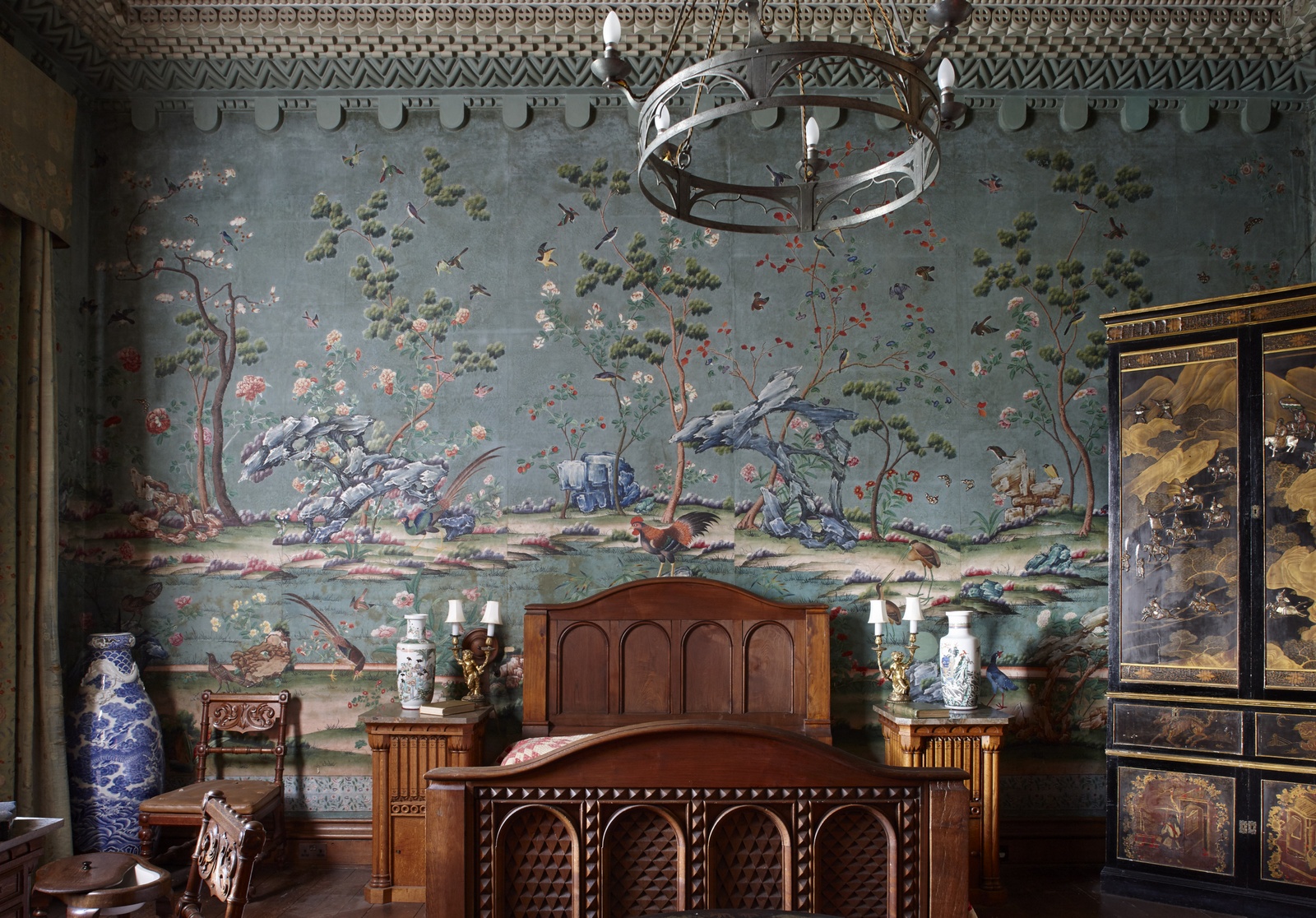Chinoiserie is described as the European/western taste for Asian or Asian inspired decoration, which includes not only wall decoration, but also porcelain, furniture, and other objects of interior.
Initially, the beautiful wall decorations, now known as “Chinese wallpaper”, and on its rise as “India papers” were not just any products for export, but in fact developed specifically to cover the European demand, in a sense of being made in China, but intended for European markets. Since having been risen to the status of one of the early successful global products, Chinese wallpapers have been an important part of European interiors for more than three hundred years, remaining a popular decoration element today.
The trade between China and Europe flourished in seventeenth century. Certain Asian objects, like porcelain, lacquers and silks, were highly desired not only because of their extraordinary quality, but also for luxurious appearance and beautiful colours. Ship commanders were allowed to bring a few numbers of objects for private use. The early fascination for things Chinese created a strong interest in Chinese art and design, especially in bird-and-flower imagery.
After having been imported, Chinese wallcoverings were adapted to European interiors, in some cases by being cut in pieces and flexibly arranged, to create a symbiosis between the existing European furniture and exotic beauty. They were installed in rooms of private use, such as bedrooms, drawing rooms etc.
One of the earliest Chinese wallcoverings was imported and installed in 1752 in Felbrigg Hall* in Norfolk.
Chinese wallpapers were romanticised over the time, assumed that all of them were hand-painted. However, earliest imported wallpapers were block printed and coloured by hand with ink or other materials. Sometimes, further details like, for example, gras were added manually to give it as realistic appearance as possible.
Multiple wallpaper sheets, installed in different estates, have the same appearance and even identical motifs which means that they might had come from the same Chinese workshop. To give it an individual touch, the sheets were cut and arranged differently.
Bird-and-flower wallcoverings, produced around 1750 and later by block-printing, were followed by fully hand-painted objects. The imagery, however, remained consistent. It is not quite clear why exactly the new hand-painted type emerged. One of the reasons might be competition from wallpapers, printed in Europe, which led Chinese producers to change their strategy, so that original Chinese wallpapers remained more glamorous type of wall decoration.
Mystical phoenix as a reflection of supreme beauty (Cobham Hall)
By the end of eighteenth century, as one of the efforts to adapt the product to changing demand and keep the customers interested, new painted elements, such as flower baskets, bird cages etc. were introduced and added to the scenery. An additional change was painting white or pale branches and plants against bright coloured backgrounds.
Furthermore, intensive deep colours and certain elements like large rocks or additional contrast colours on a wallpaper at Penrhyn Castle*, Gwynedd, were used to reflect an innovative evolvement.

Lower India Room at Penrhyn Castle
The taste for Chinese style was brought to public attention by Prince of Wales, who ordered to design several areas of Royal Pavilion, applying characteristic imagery (around 1816). However, this time Chinese wallcoverings were not restricted to installation in private rooms, but rather to public such as the entrance and reception rooms
State Dressing Room at Penrhyn Castle
Chinese Bedroom at Belton House
By the end of nineteenth century the fascination for Chinese art and design, respectively wall decoration, reached America, where newly wealthy showed strong demand. In the meantime, European demand encouraged the rise of facsimiles made in Britain which did not substantially differ from originals and sometimes were sold as such. Old wallpapers were further sold at auctions.
As a matter of fact, Chinese design heavily impacted and inspired local products’ design where images were copied from wallpapers and integrated onto textiles for furniture, curtains etc.
In general, the imported wallcoverings were combined of three layers, of which two were thin, made of sandalwood or others, and a thick layer, made of bamboo paper to give product stability. To make the wallpapers strong and robust, in Europe they were applied to a kind of canvas structure. However, very often Chinese wallpapers were simply attached directly to a wall or wooden panelling.
Today, when you come across Chinese wallpapers, there might be different materials used like silk (paper), metal sheets, partly embroidered. Well, there is no information** at hand which confirms such, although some historic wallpapers showed silvered elements, but it would be silly not to adapt to modern demand and taste for something special, gold and glamour.
Our production has its own outstanding elements as well. To learn more, go to Product information.
*The respective houses and estates are managed by the National Trust organisation. All pictures are used with NT’s permission.
**The content is based on historical facts from Emile de Bruijn’s „Chinese wallpaper in Britain and Ireland“.